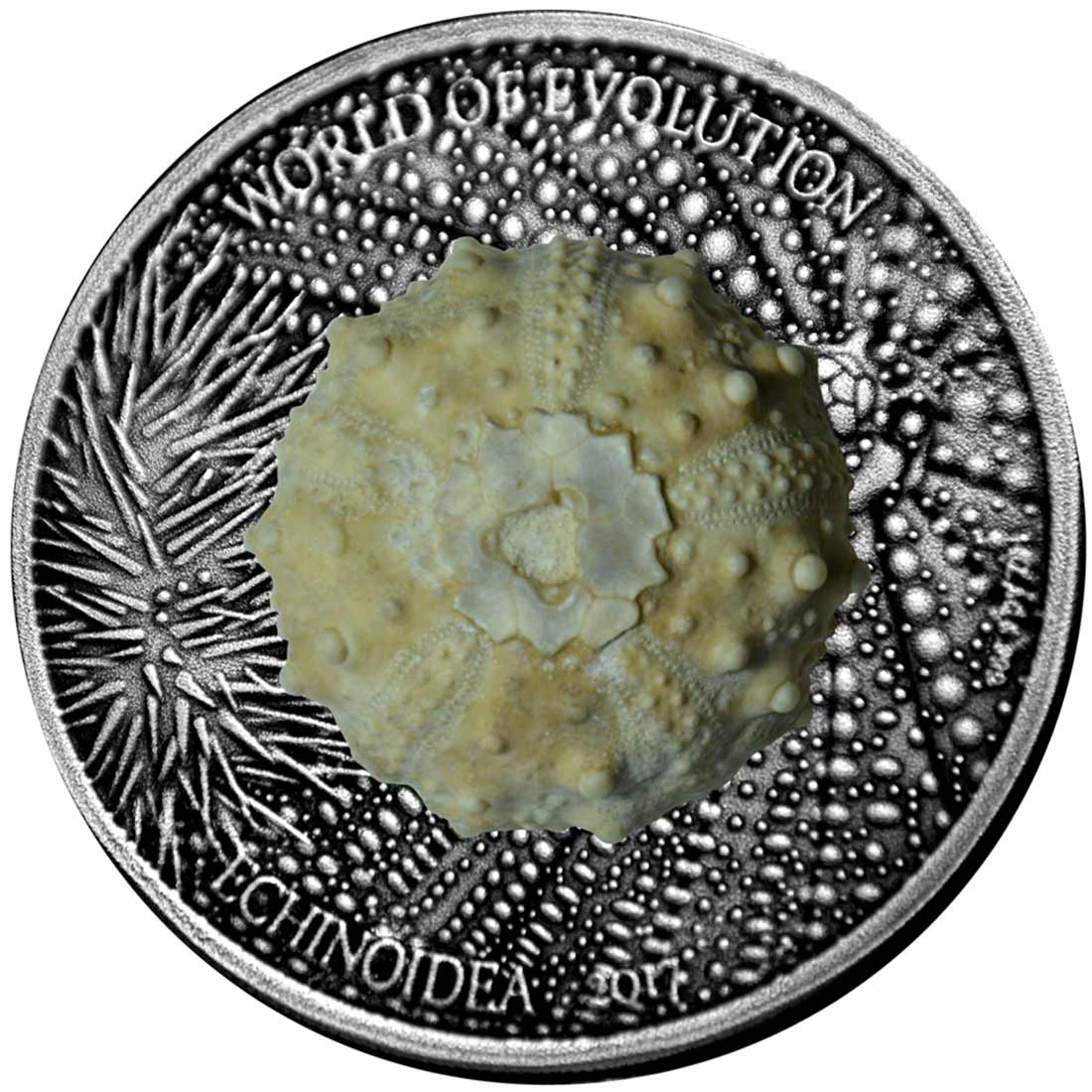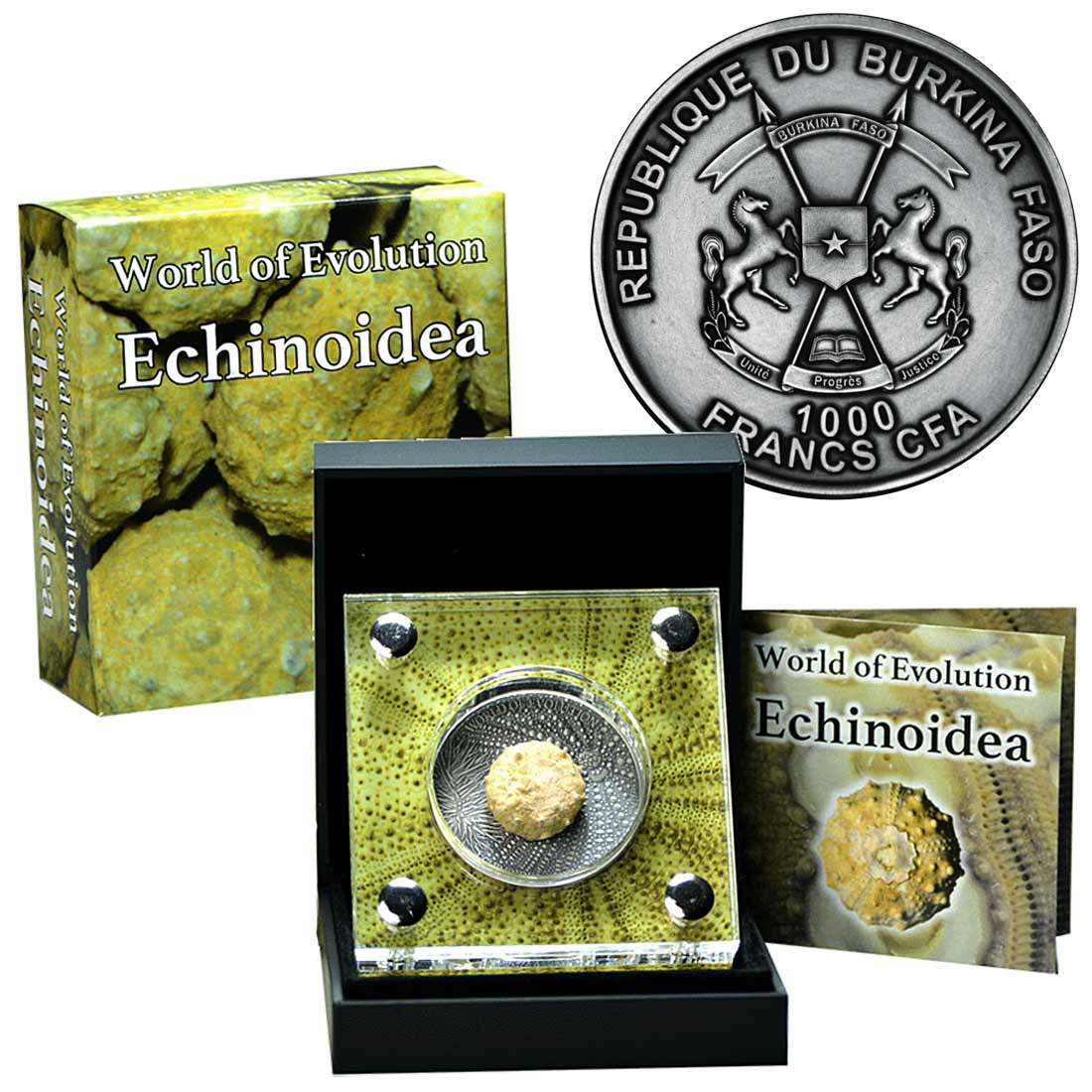MCI continues in journey through the fossil record with an actual Mesozoic Sea Urchin on a silver coin
One of a growing number of coin series featuring the hugely popular and highly fascinating world of prehistoric life, MCI-Mints World of Evolution distinguishes itself with a novel approach. Rather than depicting an ancient creature, it uses the coin to depict a background habitat and then mounts an actual fossil to the coin face.
The third such coin to be released, the Echinodea (sea urchin) follows the ammonite and shark issues and is very much in the same vein. Struck in an ounce of silver to an overlarge diameter (44 mm), the basic coin is fairly straightforward. This time around the depiction on the reverse face is of a mass of sea urchins, a creature with some pretty cool textures. The series name, coin title and the date are inscribed here, but none are particularly obtrusive as MCI have wisely chosen not to sit them on flattened areas for legibility.
The fossil is an impressive piece, although how well you consider it suitable to attach to a coin is a matter of taste. The ammonite coin held a polished half fossil on its face, better because it showed off the complex internal structure of those animals. The second held just a tooth, for the obvious reasons (size and the lack of other fossil shark parts). This time out, the coin is adorned with a whole fossil, so expect a coin you buy to have one that will likely look a little different from the one in the images here.
The obverse is a standard one for a Burkina Faso issue, featuring the African States emblem, surrounded by issuer and denomination details. The whole coin is antique-finished and supplied with a certificate of authenticity. The coin comes in an acrylic display frame. We’re huge fans of these and while MCI’s frames aren’t quite up to NZ Mint standards because of the over-large fasteners, they are nevertheless very welcome. We can certainly see a coin like this fitting in well with a display of actual fossils and surmise that that is where this series is aimed. Mintage is 500 pieces and the coin is available to buy now for €129.00. A Mosasaur coin has just appeared and we’ll look at that next week when we get some clean images.
THE ECHINOIDEA
Members of the Echinoid family are more popularly known as Sea urchins and, although the phylum also includes the sand dollars. Still common today, there are around 950 species inhabiting seas from close to the coast and right down to 5 km below the surface. Striking creatures, these spiny, globular animals have evolved into a myriad of shapes and colours. Feeding on algae, they are themselves hunted by a variety of predators from sea otters to eels and starfish.
The earliest echinoid fossils date back to the Ordovician period (450 mya), although complete specimens are rare and only the test (shell) and/or some isolated spines remain. Echinoids are found all over the world and this wide distribution and long geological lifespan makes them very useful in the dating of rocks and as an example of evolution.
The coin fossil appears to be a Phymosoma, although what species is harder to determine. These are still found today throughout Europe, North America, North Africa and the Middle East.
SPECIFICATION
| NAME | 2017 WORLD OF EVOLUTION |
| DENOMINATION | 1,000 Francs CFA |
| COMPOSITION | 0.999 silver |
| WEIGHT | 31.1 grams |
| DIAMETER | 44.00 mm |
| FINISH | Antique |
| MODIFICATIONS | Mounted fossil |
| MINTAGE | 500 |
| BOX / COA | Yes / Yes |





Leave A Comment